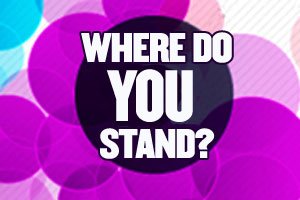
What’s the point of protesting?
Sometimes the best way to stand and be counted is to literally stand (or walk) and be counted. A protest is a way of physically demonstrating that you and your fellow protesters won’t take the issue in question lying down (although some protesters do lie down - it's a bit dangerous and we wouldn't advise it). Protests are a good way to highlight an issue and many of them have helped bring about change.
Is protesting legal?
Peaceful protest is legal; non-peaceful protests are not. That means no breaking stuff, no offensive behaviour, no criminal activity of any kind. A protest is not a riot. Confusing the two is like confusing a cucumber with a chiwawa. You have a right to protest peacefully, just as long as you respect the law and have the necessary permission. Speaking of which…
What permissions do I need?
If you’re planning a march or protest in any public place - such as a park, a street or outside your local branch of Nando’s - you need to call the local council or local police beforehand and ask for their permission. If they’re happy you’re not planning to cause trouble, and you ask nicely, you’ll hopefully be given the thumbs up.

How do I get people to take part?
Start by putting the word out on Facebook, Twitter etc, explaining what the protest is about and where and when it’s happening. Badger all your friends and family to come along (obvs). And you could try giving out flyers or print-outs about the protest at the location where it will be taking place. Getting out there and talking to people about it is a good idea.
What if people disagree with my protest?
Whatever you do or say in life, there will always be someone that disagrees. Campaigning is no exception. If people want to come to your event and voice an opposite opinion – don’t worry. They are entitled to your opinion as you are to yours. The best way to handle it is by treating them with respect and listening to what they have to say, then telling them how you see it. Hitting them with your placard is not allowed.






